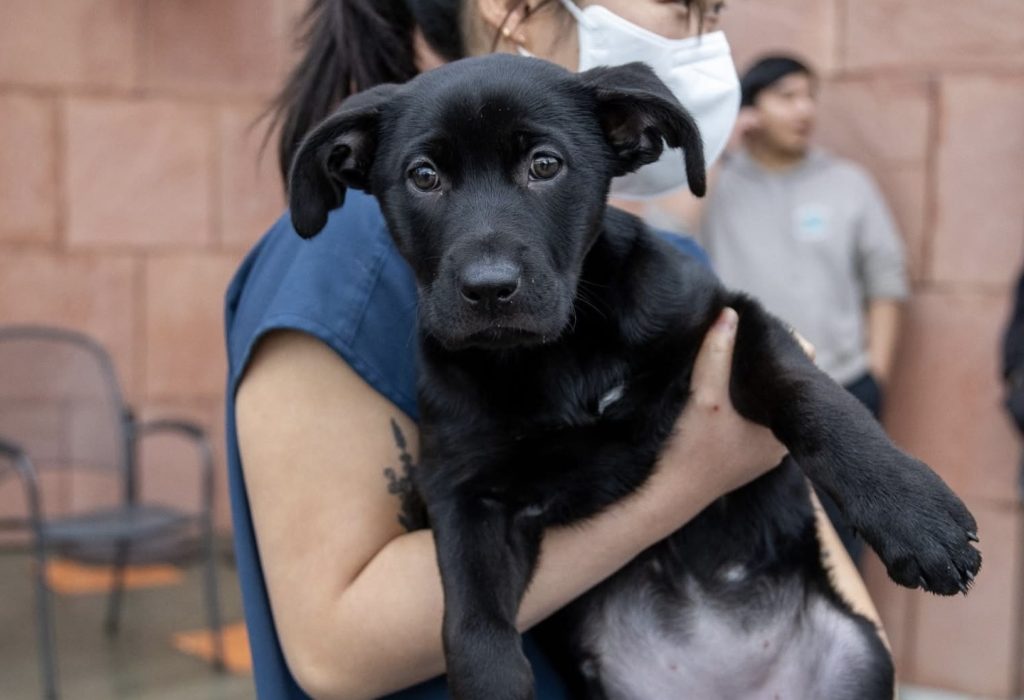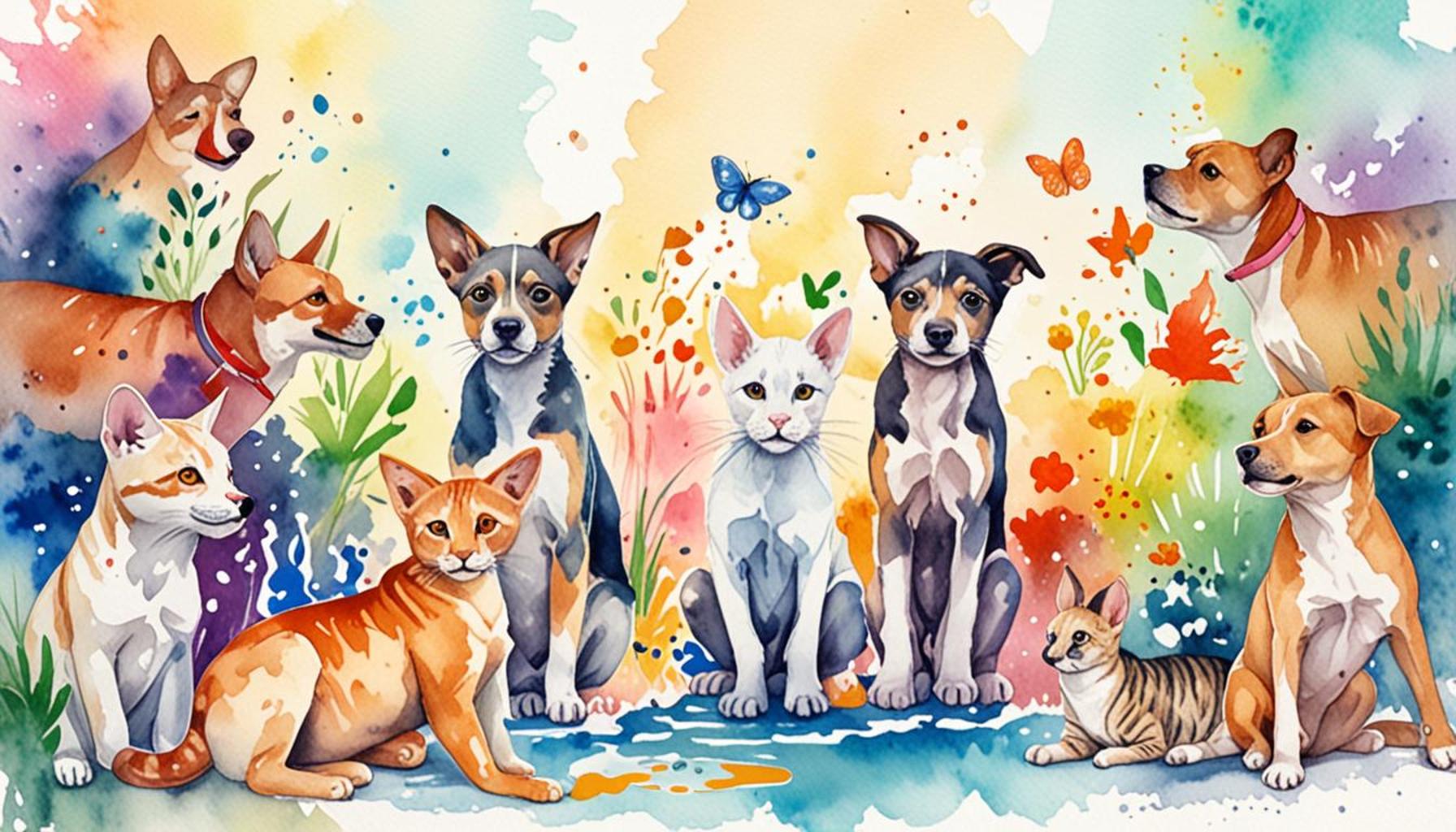The Hidden Costs of Pet Adoption: What You Need to Consider

Understanding the True Cost of Pet Adoption
Bringing a pet into your home is an exciting journey filled with joy and companionship. However, many potential adopters are often blindsided by the hidden costs of pet adoption that can extend well beyond the adoption fee.
Before making this important decision, consider the following expenses:
- Initial Veterinary Care: This includes essential vaccinations to protect your pet from diseases such as rabies and distemper, spaying or neutering to prevent unwanted litters, and initial health check-ups to ensure your pet is in good overall health. For instance, the cost of spaying a female cat can range from $100 to $400, depending on your location and the veterinary clinic.
- Ongoing Medical Costs: After the initial care, routine veterinary visits, medications for any chronic conditions, and emergency care can add up quickly. It is not unusual for pet owners to spend between $300 to $1,000 annually on veterinary expenses. Additionally, pet insurance can be a wise investment, with monthly premiums varying from $20 to $60 depending on your pet’s age and health.
- Pet Supplies: Essential supplies are a must, including high-quality food, collars, leashes, bedding, and toys. On average, you can expect to spend around $500 to $1,000 per year on food and supplies alone. Don’t forget the smaller items, such as food and water bowls or training pads, which can also contribute to your initial setup costs.
In addition to financial expenses, there are significant lifestyle adjustments that come with pet ownership:
- Time Commitment: Pets demand your time, requiring daily exercise, feeding, grooming, and social interaction. For instance, dogs typically need several walks and play sessions each day, which can consume considerable time, especially for high-energy breeds.
- Travel Restrictions: Your ability to travel may also change. Finding pet-friendly accommodations can be a challenge and often comes at a premium price. Additionally, you may need to budget for pet sitters or boarding if you need to be away from home for an extended period.
- Potential Damage: Pets may unintentionally cause wear and tear on your home, leading to ongoing repair costs. From scratched floors to chewed furniture, these minor incidents can quickly add up. For example, replacing a damaged couch due to your pet’s playful nature could cost hundreds of dollars.
It is crucial to weigh these factors carefully. By understanding the full scope of what pet ownership entails, you equip yourself with the knowledge needed for a rewarding yet challenging experience. Through careful planning, potential adopters can prepare better for the financial and lifestyle aspects of pet ownership, leading to a more harmonious relationship with their new furry family members.
In conclusion, pet adoption should not be undertaken lightly. Consider researching local adoption agencies and utilizing resources like budgeting calculators specifically designed for pet ownership. Being fully informed will aid prospective pet owners in making educated decisions while avoiding unexpected surprises down the line.

LEARN MORE: Click here to discover positive reinforcement techniques
Beyond the Adoption Fee: Unpacking Hidden Expenses
When you take the plunge into pet adoption, you may envision the joy of companionship and unconditional love that pets bring. However, it’s essential to dig deeper and uncover the hidden costs of pet adoption that are often overlooked by first-time adopters. Understanding these expenses can not only help you budget effectively but also prepare you for the lifelong commitment of pet ownership.
To give you a clearer picture, let’s break down some of the critical costs associated with adopting a pet:
- Training Costs: Whether you adopt a rambunctious puppy or a more mature dog, training is an essential part of pet ownership. Professional obedience classes can range from $100 to $300 for a basic course, while specialized training for behavioral issues can skyrocket to over $1,000. Investing in training not only helps create a well-behaved pet but also strengthens the bond between you and your furry friend.
- Grooming Expenses: Depending on the type of pet and its breed, grooming can be another significant cost. Long-haired breeds often require regular trips to a groomer, which can cost anywhere from $30 to $90 per session. Additionally, if you decide to handle grooming at home, you will need to invest in grooming tools such as brushes, shampoos, and nail clippers, further adding to your expenses.
- Food and Nutrition: The notion that all pet food is created equal is a misconception. High-quality pet food tailored to your pet’s needs is critical for their health, and this can significantly influence your budget. On average, pet owners can spend between $300 to $600 per year on dog food alone, with premium brands costing even more. Cats aren’t exempt; specialized diets also come at a premium.
- Emergency Preparedness: Just like humans, pets can face unexpected health issues that require immediate care, leading to costly veterinary bills. It’s wise to set aside an emergency fund dedicated to your pet’s health—consider a cushion of $500 to $1,000. Faced with a sudden illness or injury, you’ll be relieved to have this financial security to cover urgent expenses.
While these costs may seem daunting, they are crucial to consider to ensure your pet’s well-being. A well-planned budget can alleviate stress and prepare you for the responsibilities that accompany pet ownership. Prospective adopters should look beyond the immediate gratification of bringing a pet home and take the time to evaluate their readiness to provide lifelong care.
Furthermore, be sure to explore local resources and programs that may help offset costs. For instance, some adoption organizations offer pet wellness days, discounts on veterinary services, or programs for reduced training costs. Engaging with your local pet community can provide essential insights and practical support throughout your pet’s life.
| Hidden Costs | Details |
|---|---|
| Veterinary Care | Routine check-ups, vaccinations, emergency care, and ongoing treatments can add up quickly. |
| Food and Supplies | High-quality pet food, grooming products, and bedding contribute to ongoing monthly expenses. |
| Training Costs | Professional training can enhance behavior but increase initial spending. |
| Pet Insurance | Protecting against unforeseen medical costs can be a savvy investment for pet owners. |
In addition to the visible costs associated with pet adoption, such as adoption fees, it’s crucial to acknowledge hidden expenses that may arise later. Understanding these costs can greatly affect the overall experience and satisfaction of pet ownership. For instance, routine veterinary care is essential for a pet’s well-being; however, this often goes beyond initial vaccinations. Regular check-ups, unexpected illnesses, and even surgery can lead to significant financial implications.Moreover, the expenses for food and supplies should not be overlooked. Opting for high-quality food and necessary supplies, such as grooming products, can result in considerable monthly costs. If you are considering adopting, it’s important to factor in these critical details to form a comprehensive budget.Additionally, professional training for your pet may also be an unexpected expense. Although it can be beneficial for both the owner and the pet in terms of improving behavior and communication, it comes with its own price tag. Finally, pet insurance is another aspect to consider; it may provide financial relief for medical emergencies, but it also requires careful evaluation of costs versus benefits. By thoroughly understanding these hidden costs, you can make a more informed decision when it comes to pet adoption.
DIVE DEEPER: Click here for essential tips
Ongoing Care and Maintenance: Long-Term Financial Commitment
While the initial expenses of adopting a pet can take many first-time adopters by surprise, the ongoing costs are often just as significant. It’s important to recognize that pet ownership is a long-term commitment that requires consistent financial investment over the years. Here are some ongoing costs that pet owners should consider:
- Routine Veterinary Care: Beyond emergency medical costs, regular vet visits are a fundamental part of keeping your pet healthy. Vaccinations, annual check-ups, and preventive treatments for parasites can accumulate to about $200 to $500 each year. Keep in mind that some breeds may require more frequent vet visits due to hereditary health issues, which can further increase costs.
- Pet Insurance: Given the unforeseen medical expenses that can arise, many pet owners choose to invest in pet insurance. Policies can vary widely but generally cost between $20 to $70 a month, depending on your pet’s breed, age, and health background. While this may appear as an additional expense, insurance can pay off significantly if your pet faces a severe illness or injury.
- Supplies and Accessories: Pets require more than just food and water—they also need various supplies and accessories. Items such as leashes, collars, beds, toys, and litter boxes represent crucial investments. Budgeting around $200 to $500 for initial purchases is a prudent approach. Additionally, you’ll need to replenish these items over time as they wear out or get lost.
- Boarding and Pet Sitting: If you travel frequently, you’ll need to consider the costs of pet care while you’re away. Boarding facilities can charge anywhere from $20 to $75 per night, depending on the level of service. Alternatively, hiring a pet sitter can cost around $15 to $50 per visit. This can add up quickly for pet owners with demanding travel schedules.
- Licensing and Registration Fees: Many municipalities require pet owners to license their pets, which typically includes a registration fee that can range from $10 to $50 each year. Some areas might also mandate vaccinations as part of the licensing process, which can further add to expenses. Familiarizing yourself with local regulations and fees should be part of your pre-adoption research.
Furthermore, it’s vital to remember that pets, like humans, are susceptible to aging, which often brings about increased care and associated costs. Senior pets may require specialized foods, medications, and additional veterinary attention, leading to higher expenses. Adopting a pet means committing to care for them through all stages of life, which may demand more adjustments in your budget as time goes on.
In light of these considerations, prospective adopters should take the time to carefully assess their financial readiness for pet ownership. It’s not just about the initial love and connection; it’s equally about providing sustained care and support over the years. Evaluating your financial situation honestly and realistically, and creating a comprehensive budget can significantly alleviate potential stressors once your new pet arrives home.
DISCOVER MORE: Click here to learn the truths and myths about breed adoption
Conclusion: Navigating the Costs of Pet Adoption
In conclusion, while adopting a pet can bring immeasurable joy and companionship, it is essential to recognize the hidden costs associated with this commitment. From routine veterinary care to supplies, pet insurance, and potential boarding expenses, the financial implications of pet ownership extend far beyond the adoption fee. First-time adopters must approach this decision by being fully informed—evaluating their personal finances, understanding local regulations, and anticipating the potential for increased expenses as their pet ages.
Moreover, the emotional impact of pet ownership should not be overlooked. With this responsibility comes the satisfaction of caring for a living being, but it also requires a willingness to adapt to their needs over the long term. Factors such as lifestyle changes, unexpected travel, and rising veterinary costs can all influence the affordability of pet ownership.
For potential adopters, taking the time to create a comprehensive and realistic budget is key, enabling a smooth transition into a shared life with a new furry friend. Research into various breeds, their common health issues, and associated long-term costs can offer further clarity. Ultimately, responsible pet ownership begins with a firm understanding of not just the initial investment, but also the ongoing financial and emotional commitment required.
By perusing these considerations and preparing adequately, you can ensure a rewarding experience for both you and your beloved pet, paving the way for a harmonious and fulfilling relationship.


